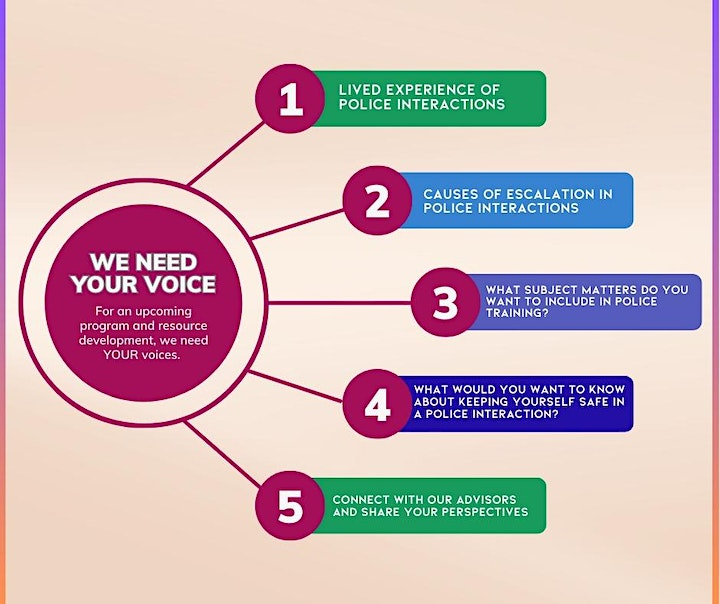Law Enforcement is Failing the Autistic Community

Law Enforcement is Failing the Autistic Community
Here’s How Kind Theory is Addressing this Huge Overlooked Equity Issue
Autistic people in our communities have good reason to fear interacting with law enforcement.
People with disabilities, including neurodivergent people, are disproportionately likely to interact with police. These experiences are often negative. Autistic people may be especially at risk.
A study in the US found that by the age of 21, 20% of autistic young people may be stopped and questioned by police and 5% may be arrested. By contrast, in the general population of US teenagers, only 9% are stopped by police, and much fewer than 1% are arrested.
That means autistic youth are stopped by police more than twice as often as young people in general, and arrested over five times as often!
US law enforcement statistics suggest that over their lifetime, autistic people are seven times more likely than the general population to interact with police.
When confronted by police, autistic people often become overwhelmed, especially if they have sensory hypersensitivity or anxiety.
Police officers expect their questions to be answered and their instructions to be obeyed immediately and calmly. That isn’t always possible for autistic people under stress. For those with limited ability to speak, it can be especially hard to quickly explain their behavior or answer questions. Communication worsens as autistic people’s stress increases.
Autistic people may not know what to expect from a police interaction or what to do. The uncertainty is stressful and contributes to miscommunications.
Officers unfamiliar with autism may misinterpret them as resistant and use unnecessary force. Police encounters can easily become traumatizing and even fatal.
Not surprisingly, many autistic people and their families worldwide fear police encounters. Professionals who serve them also worry.
Current Training Programs for Law Enforcement Have Gaps
Nationwide, training programs teach officers to recognize autistic people and de-escalate interactions. It’s a promising beginning.
However, in the US, these programs vary, making it hard to tell how much they help. Their length ranges from 13 minutes to 19 hours; their format includes lecture, video, roleplay, or a combination; and their content and quality vary. There are also no agreed-upon standards yet.
Receiving training makes some police officers feel more confident about interacting with autistic people in the future. However, we don’t know yet whether that leads to fewer arrests, injuries, and deaths. Police records rarely indicate whether anyone involved was autistic.
Police officers learn most when they can roleplay interacting with autistic people. Also, police officers who have interacted with autistic people in their own lives learn more from training. Therefore, programs that offer opportunities to interact with real autistic people will be the most effective.
Surprisingly, while police officers are taught how to communicate with autistic people, there hasn’t been any focus on teaching autistic people how to communicate with police officers.
We don’t know of a single program aimed at autistic people.
Until now.
Kind Theory is Building Safe and Supportive Communities
Kind Theory is filling that need by developing the Building Safe and Supportive Communities (BSSC) Safety program.
Kind Theory might be the first to offer safety training to neurodivergent people worldwide.
The BSSC Safety program is also unique because it’s being made by neurodivergent people, for neurodivergent people.
Any training about us or for us should include us.
Our 5-person neurodivergent team will also work with law enforcement officers from a neurodiversity perspective. We will help them recognize neurodivergent people and understand their behavior, whether or not they can speak in the moment. We will teach police officers how to de-escalate.
Help Kind Theory Build Safe and Supportive Communities
As Kind Theory develops the BSSC Safety Program, they need input from neurodivergent people to create a program that represents the range of experiences and needs in our varied community as completely as possible.

Do you have lived experience interacting with police?
What do you think causes escalation in police interactions?
What topics would you include in safety training for police, and for neurodivergent people?
What do you want to know about keeping yourself safe in a police interaction?
To make your voice heard, e-mail Kind Theory (talktous at kindtheory.org).
You can also email Ayesha Ijaz (a.ijaz at kindtheory.org), or Amun Malik (a.malik at kindtheory.org)!
Visit our website to learn more about Kind Theory’s BSSC programs. Neurodivergent people and law enforcement agencies can request BSSC Safety training here.
Come share your experiences and ideas. Your voice matters to us!
Kind Theory needs YOU to help us develop a program that truly makes our communities safer.
Further Reading
Elissa Ball and Jaclyn Jeffrey-Wilensky. Why autism training for police isn’t enough. Spectrum, November 26, 2020. Accessed January 19, 2022.
International Board of Credentialing and Continuing Education Standards (IBCCES). Law enforcement and autism: Why it’s an issue and what to do. IBCCES website, June 22, 2020. Accessed December 2022.
A fairly readable review of research studies: Sreckovic, M. A., Kenney, C. K., & Wallace, M. (2022). Autism Training for Law Enforcement Officers: A Scoping Review. Journal of Autism and Developmental Disorders, p. 1-12.

Emily Morson
About the Author
Emily M. is a writer fascinated by the infinite variety of human minds. She grew up inexplicably different and was diagnosed as an adult with several forms of neurodivergence, including ADHD and an auditory discrimination disability. Feeling as if she were living life without a user's manual, she set out to create her own. In the process, she met other neurodivergent people on similar quests. She began working with them, advocating for inclusion, accessibility, and autism acceptance. Seeking to understand how neurodiverse minds work, she became a cognitive neuroscience researcher.
Her favorite research topic: what do children learn from their intense, passionate interests? Wanting to help neurodivergent people more directly, she trained as a speech/language therapist. Ultimately, she turned to writing, combining research with personal experience to explain autism and ADHD and champion acceptance – because everyone is happier when they are seen and accepted for who they are. She envisions a world where neurodiverse people have equal opportunities for education, loving relationships, and meaningful work.
She also blogs about autism and ADHD research at Mosaic of Minds. You can chat with her on Twitter: @mosaicofminds

